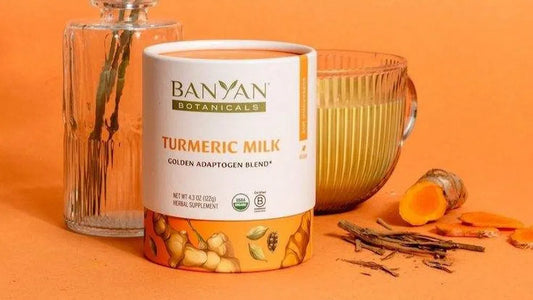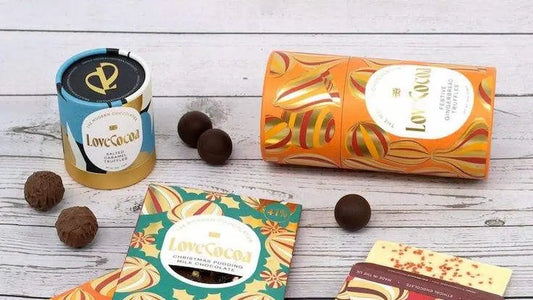Explore comprehensive guide to food packaging design
Compartir
We all know that food packaging design plays a pivotal role in brand differentiation, consumer engagement, and sustainability. At Esytube, we understand the importance of packaging that not only protects your products but also captivates consumers and reflects your brand ethos. In this comprehensive guide, we'll delve into the intricacies of food packaging design, exploring everything from conceptualization to material selection, printing techniques, and real-world examples of creative packaging solutions.
Food Packaging: The Concept Stage
Before diving into the design process, it's essential to lay a strong foundation by asking critical questions:
- What's the product? This involves delving into its composition, characteristics, and unique selling points. Factors such as perishability, storage requirements, and regulatory considerations play a crucial role in shaping packaging decisions.
- Who's your target audience? identifying the target audience is essential. This entails conducting thorough market research to gain insights into consumer demographics, preferences, and behavior patterns. By understanding who will be purchasing the product, designers can tailor the packaging to appeal to their tastes, lifestyles, and purchasing motivations.
- How would you describe your brand and product? defining the brand identity and product positioning sets the tone for the packaging design. This involves articulating the brand's values, personality, and market positioning. Whether the brand aims to convey a sense of luxury, sustainability, or innovation, the packaging should reflect these attributes cohesively. By addressing these questions thoughtfully, designers can create packaging that not only protects and promotes the product but also resonates with consumers on a deeper level, fostering brand loyalty and recognition.
Design Considerations
When it comes to food packaging design, every detail matters:
- Typeface selection: Choosing the right font conveys brand personality, enhances readability, and communicates product attributes.
- Color palettes: Colors evoke emotions, convey brand identity, and influence purchase decisions. Selecting a cohesive color scheme that resonates with your target audience is key.
- Illustration and graphic design styles: Visual elements such as illustrations, icons, and patterns contribute to brand storytelling and create a memorable brand experience.
- Packaging shapes and forms: Innovative packaging structures not only enhance shelf visibility but also improve functionality, convenience, and sustainability.
Printing and Materials Food Packaging
The choice of materials and printing techniques is pivotal for achieving both aesthetic appeal and environmental sustainability:
- Basics of packaging materials: From paperboard to biodegradable plastics, understanding the properties and eco-credentials of different materials is essential for making informed decisions.
- Eco-friendly materials: As advocates of sustainability, Esytube offers a range of paper tubes containers made from recycled and recyclable materials, minimizing environmental impact.
- Printing and manufacturing: Advanced printing technologies allow for high-quality graphics and customization options while adhering to sustainable practices and regulatory standards.
- Legal considerations: Compliance with food safety regulations, labeling requirements, and sustainability certifications is paramount to ensure consumer trust and product integrity.
Food Packaging Design That Entices Consumers
Implementing effective packaging design strategies can significantly influence consumer purchasing decisions:
- Marketing evaluation: Understand your target market and design packaging that resonates with their preferences and values.
- Brand design: Communicate your brand story and differentiation through cohesive branding elements and visual identity.
- Label & packaging design: Create shelf presence and stand out from competitors with eye-catching graphics and messaging that communicate product benefits.
The Impact of Paper Tubes In The Food Packaging Area
Paper tube packaging is revolutionizing food packaging with its sustainable and versatile nature. Derived from renewable resources, it meets the growing demand for eco-friendly options, reducing the environmental impact compared to traditional materials. Its biodegradability enhances brands' sustainability credentials while providing robust protection for food products throughout the supply chain.
Customizable designs cater to diverse product needs, enhancing functionality and aesthetic appeal. Advanced manufacturing technologies improve moisture resistance and barrier properties, ensuring optimal food preservation.
Moreover, paper tube packaging offers a unique marketing advantage, providing ample space for branding and storytelling. Brands utilize its tactile qualities to connect with consumers on a deeper level, reinforcing their values.
This blend of sustainability, functionality, and branding potential positions paper tube packaging as a dominant force in food packaging, could drive positive change towards a more sustainable future.
5 Brands that take paper tubes as their food packaging
Several food brands have embraced the use of paper tubes as their packaging solution, aligning with sustainability initiatives and consumer preferences for eco-friendly options. Here are a few examples:
- Primal Kitchen: Known for their line of paleo-friendly and Whole30-approved products, Primal Kitchen utilizes paper tubes for packaging some of their condiments, such as mayonnaise and salad dressings. The sturdy paper tubes not only reflect the brand's commitment to natural ingredients but also provide a convenient and eco-friendly packaging solution.
- Nush Foods: This UK-based brand specializes in dairy-free and low-sugar snacks, including yogurt alternatives and cakes. Nush Foods opts for paper tube packaging for their snack bars, reflecting their focus on sustainability and reducing plastic waste.
- Alter Eco: Renowned for their fair trade and organic chocolates, Alter Eco embraces paper tube packaging for their chocolate truffles and bars. The compostable paper tubes align with the brand's ethos of environmental stewardship and ethical sourcing practices.
- Simply Gum: As a leader in the natural chewing gum market, Simply Gum opts for paper tube packaging for their gum products. The recyclable paper tubes not only reduce plastic usage but also contribute to the brand's minimalist and eco-conscious image.
- Nutiva: A pioneer in organic and sustainable food products, Nutiva utilizes paper tube packaging for some of their superfood powders and protein shakes. The compostable paper tubes align with Nutiva's commitment to environmental responsibility and clean ingredient sourcing.
Packaging Design by Esytube
At Esytube, we're passionate about helping food brands create packaging that not only protects their products but also drives sales and builds brand loyalty. Our expertise in paper tubes containers allows us to offer sustainable packaging solutions that meet the highest standards of quality and environmental responsibility. From concept development to printing and manufacturing, we're committed to delivering packaging that reflects your brand ethos and resonates with your target audience.
In conclusion, food packaging design is an art and a science that requires careful consideration of aesthetics, functionality, and sustainability. By partnering with Esytube, you can leverage our expertise and innovative solutions to create packaging that not only enhances your brand's image but also contributes to a more sustainable future. Contact us today to learn more about our packaging options and how we can help bring your vision to life.




